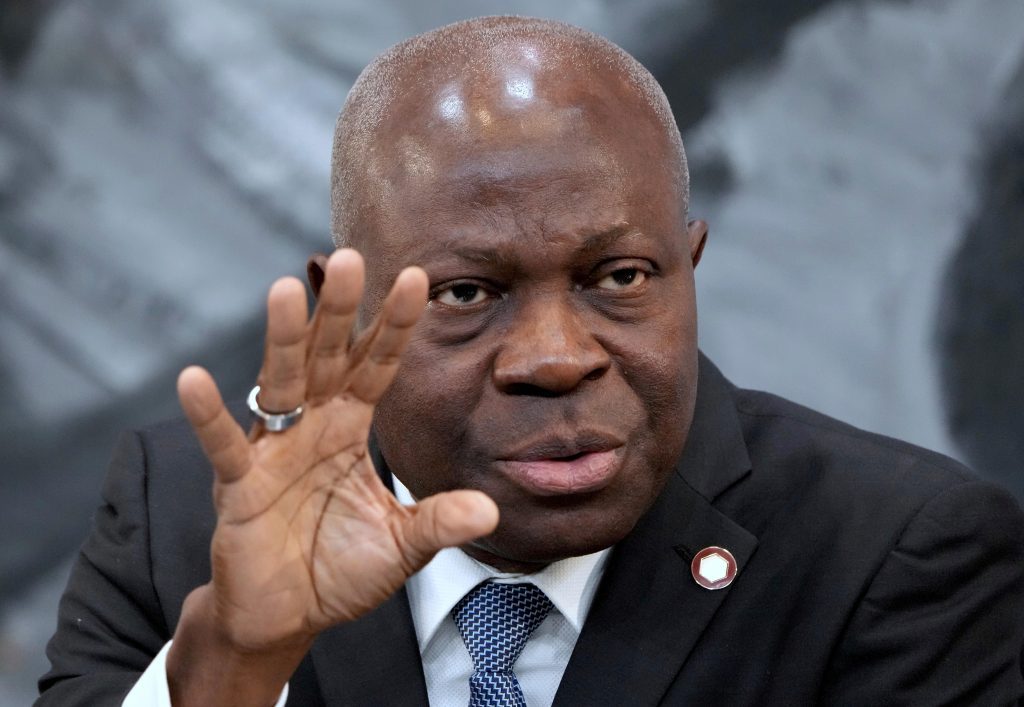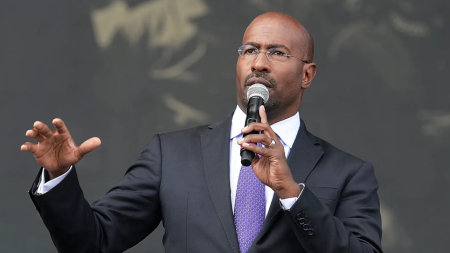By JAMEY KEATEN (Associated Press)
The U.N. labor agency reported that illegal profits from forced labor around the world have increased to an obscene amount of $236 billion per year. Three-fourths of this money comes from sexual exploitation, which takes away income from migrants, steals jobs from legal workers, and allows criminals to avoid paying taxes.
According to the International Labor Organization, the total profit in 2021 from forced labor, which is the most recent year covered in the study, has increased by 37%, or $64 billion, compared to the last estimate published ten years ago. This rise is due to more people being exploited and more money being generated from each victim, as per the ILO.
The first line of the report's introduction stated, "$236 billion. This is the obscene level of annual profit generated from forced labor in the world today." This money is taken from the pockets of workers who are coerced to work, from migrants' remittances, and from lost tax revenue for governments.
ILO officials pointed out that $236 billion is equivalent to the economic output of EU member Croatia and surpasses the yearly revenues of big tech companies like Microsoft and Samsung.
Forced labor can lead to corruption, strengthen criminal networks, and further promote exploitation, according to the ILO.
Gilbert Houngbo, the director-general of ILO, is calling for international cooperation to combat this illegal activity.
In a statement, Gilbert Houngbo mentioned that people in forced labor experience various forms of coercion, with deliberately withholding wages being one of the most common. He also highlighted how forced labor perpetuates cycles of poverty and exploitation, which undermines human dignity.
Houngbo added, "We now know that the situation has only got worse."
Forced labor is defined by ILO as work imposed against the will of the employee and enforced with the threat of punishment. It can occur at any stage of employment: during recruitment, in the living conditions related to work, or by preventing people from leaving a job.
In 2021, an estimated 27.6 million people were in forced labor on any given day, which is a 10% increase from five years earlier. More than half of them were in the Asia-Pacific region, while Africa, the Americas, and Europe-Central Asia each accounted for about 13% to 14% of the total.
ILO mentioned that 85% of affected individuals were in privately imposed forced labor, encompassing slavery, serfdom, bonded labor, and activities like begging where the money goes to someone else. The remainder were subjected to forced labor imposed by government authorities, but this was not covered in the study.
Critics have raised concerns about "modern day slavery" in places such as the prison system in the U.S. state of Alabama.
ILO experts explained that forced labor imposed by government authorities was not included in the report due to a lack of data, despite estimates showing that nearly 4 million people were impacted by it.
Scott Lyon, a senior policy officer at ILO, said that the organization condemns cases of forced labor imposed by states, whether in prisons, military conscription, or other forms of state-imposed forced labor.
The report revealed that just over one-fourth of the victims worldwide were exploited sexually, but this accounted for nearly $173 billion in profits, or almost three-quarters of the global total, showing the higher profits from selling sex.
According to ILO, about 6.3 million people experienced forced commercial sexual exploitation on any given day three years ago, with nearly four in five of those victims being girls or women, and children making up more than a quarter of the total cases.
Forced labor in industry came in second place at $35 billion, followed by services at almost $21 billion, agriculture at $5 billion, and domestic work at $2.6 billion, as reported by the Geneva-based labor agency.
Manuela Tomei, ILO’s assistant director-general for governance, stated at a conference in Brussels that no region is immune to forced labor, and all economic sectors are involved, while the European Union’s parliament is close to finalizing new rules to crack down on forced labor.
Tomei mentioned at the conference that the world is “far away” from U.N. goals to eradicate forced labor by 2030, despite efforts made by countries like the United States to combat forced labor.
Valdis Dombrovskis, the executive vice-president of the European Commission, described the ILO findings as “shocking and appalling.”
Dombrovskis emphasized that forced labor goes against social justice, and that business should never be done at the expense of workers' dignity and labor rights.









